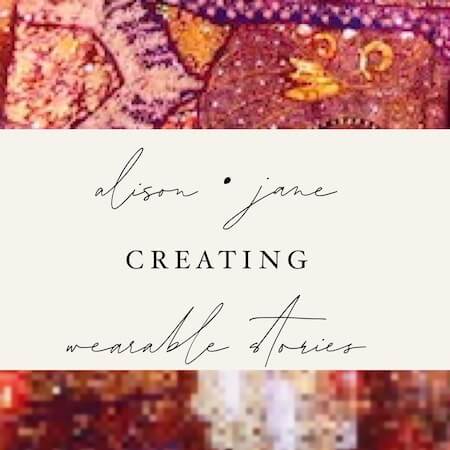6 Ancient Grains You Should Know
What’s old is new again when it comes to ancient grains. All the recent talk about Paleo eating might seem like a fad, but in reality makes a lot of sense. Knowing a food hasn’t been altered since the beginning of time means it is a pretty attractive ingredient to feed my family. These grains are easy to prepare, add flavor and texture as well as a ton of nutritional value to meals. Let me introduce you to 6 ancient grains and a bean that you can add to your Meatless Monday menu.

Are you familiar with sorghum, amaranth and wheat berries? You might have used lentils, but what about mung beans? I’ve had a hey day discovering all these new ancient grains. All are good sources of protein and add great vitamins and minerals to a diet that does not include meat.
- Amaranth-this grain is traced back at least 6,000 years to the Aztecs and Incas. The taste is a bit nutty with a little peppery bite. Often used in breakfast porridge or ground into baking flour, amaranth can be used in soups and salads or popped like corn and even used in dressings. It is rich in amino acids such as lysine and gluten-free.
- Wheat Berries-these are one of my favorites. A wheat berry or wheatberry is an entire wheat kernel, composed of the bran, germ, and endosperm. Wheat berries have a tan to reddish brown color and are available as either a hard or soft processed grain.They take time to cook, so plan accordingly. Delicious in summer salads or warm with goat cheese and a light dressing. I especially like to use them (or farro) to replace the rice in this power packed riff on quiche that my family requests again and again.
- Red Lentils-also known as Masoor Dal, lentils appear as far back as the Old Testament. Technically, lentils are considered a grain legume known as a pulse, which means they are harvested for their seeds. Ranging in color from red to brown to green and black, they are small little lens shaped seeds, and come in many different colors.
- Green Lentils-originally grown in volcanic soils near Puy, France, they are often used as a meat substitute in Eastern cooking. Rich and firm in nature, they are a great addition to soups, salads and vegetable dishes. They are a good source of fiber and gluten-free. Try them in a recipe for stew or in these other suggestions for Meatless Monday.
- Sorghum-originated in Africa thousands of years ago and spread along the ancient trade routes to Asia. Today it remains a staple in India and Africa. The hearty, chewy texture is a great addition to pilafs and cold salads. It is also tasty popped like popcorn.
- Farro-yes I am fond of farro. Similar to wheat berries, this crunchy grain is a great substitute for rice and can give a new spin on risotto. I especially like this recipe for grilled Haloumi and farro. In ancient Rome, it was a diet staple and provided one of the main sources of nourishment. Farro was even used as a form of currency. Today it is highly regarded in Italy and used in many traditional Tuscan dishes. There’s good reason they call it the “mother of all wheat”.
- Mung Beans-native to India,they have been cultivated for thousands of years as a delicious source of nutrition. Today, they are most popularly known for their wonderful “bean sprouts”. Whole mung beans have a slightly sweet, nutty flavor and can be cooked on the stovetop like common beans. I like to use the sprouted mung beans which preserves peak nutrition and is sprouted at low temperature. This makes them easier to digest and the protein more easily absorbed. They are packed with vitamins and minerals, low in calories and are cholesterol free.
Now that you are acquainted with these ancient grains (and a bean) will you incorporate any into your diet? Perhaps you already enjoy them in a favorite recipe. Leave me any of your ideas in the comments. I’m always looking for new ways to use these 6 ancient grains.





































I love grains and lentils! I haven’t tried sorghum or amaranth yet – just used them as flours in baking. I make a spelt grain salad we love – cooked with a rosemary sprig, then tossed with basil pesto, edamame beans, artichoke, and red pepper strips. I’ve also been making a mung bean hummus which is good, and economical too. Thanks for this!
Mung bean hummus, now that is something I never thought of Dawn. I will give it a try for sure.
Great idea and so helpful to feature these grains. I’ve had them all except Sorghum, that I know of. I hope more people experiment with these unique textures and tastes instead of the traditional white or brown rice side dish.
Much more tasty and nutricious than white rice. It’s great to see so much information emerging about all the different ancient grains.
I was familiar with the mung beans and some of these grains and I love soups with lentils. Thanks for the introduction to some of the lesser known grains – I can’t wait to try them!
I’ve used just a few. I only thought amaranth was just a pretty flower in the fall time…i’ll have to give it a try
I do love wheatberries, lentils and mung beans. It was wonderful to be introduced to the others, particularly when I’m having such a love/hate relationship with wheat at the moment. Pete learned to use mung beans in Indian cooking, so I’m sure you could google up a curry or two.
Mung beans in curry-now that sounds yummy Betsy. Seems like many of you are way ahead of me with mung bean recipes.
We are always on the look out for new foods, so this is great! Thanks.
I’m happy I could share some new information with you. They are delicious.
I’ll have to look for Sorghum now to try popping it like popcorn! I love lentils, and like to try new grains as family members find gluten hard to digest.
It’s very different from popping corn, but a fun change. Let me know how you like it Shelly.
It is a good thing that these ancient grains are being reinserted into our diet. I’ve always liked lentils, and I enjoy the different kinds.
While we’re on grains, I was wondering just today why barley isn’t very popular. Perhaps the subject for another post:-)
We are both gluten free so we have used four of these grains. I have a great but simple recipe for amaranth bars, which we love.
I have yet to try the mung beans so now I will have to go and find some.
Ruth
I’ve used mung beans, wheat berries, lentils and was just introduced to farro. I’m just learning about alternative sources for protein as we eat less and less meat. Nice photos.